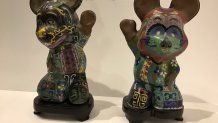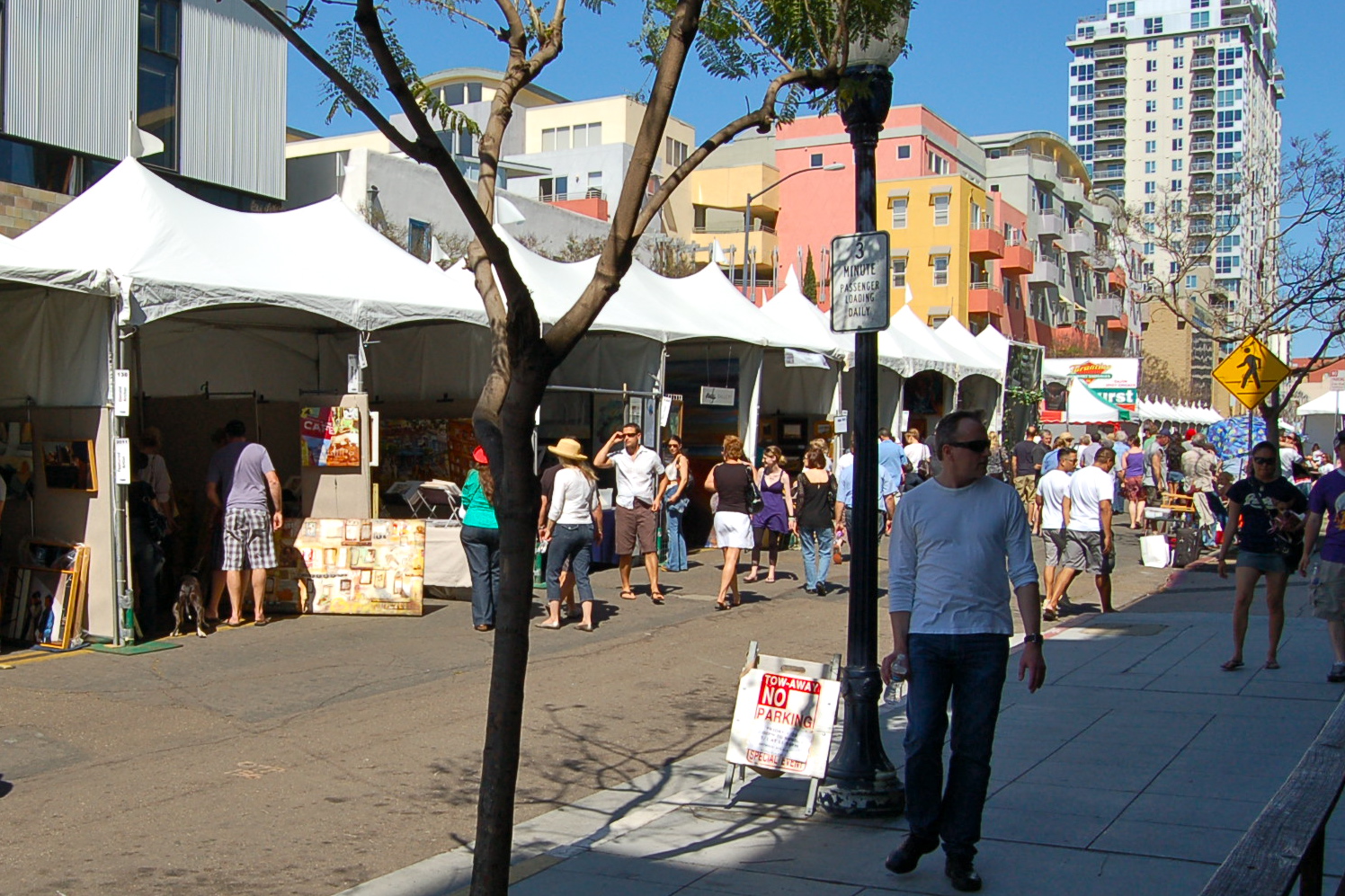NBC 7’s Dave Summers reports an investigation into the value of artifacts held at the San Diego Chinese Historical Museum.
The Chinese Historical Society and Museum calls itself America’s "foremost institution dedicated to sharing the Chinese American experience," but former employees say the institution is not all it could be.
The employees complained about the selection process for the museum’s collection, said some collection items have disappeared, and questioned the museum’s use of appraisers. Another concern was some of the collections were neglected.
Stream San Diego News for free, 24/7, wherever you are with NBC 7.
"The area where valuable collections were stored would reach extremely low and extremely high temperatures," one employee told NBC 7 Investigates.
The employee’s identities are concealed because they are concerned about being blacklisted.
Get top local San Diego stories delivered to you every morning with our News Headlines newsletter.
NBC 7 Investigates spoke to two former workers who quit the museum last summer over what they were seeing. A third person, Tiffany Wai-Ying Beres, was fired last June and has filed a whistleblower lawsuit against the museum.
In the lawsuit, she alleges that she was fired as executive director after she began pointing out the "Museum was engaged in a variety of illegal activities."
San Diego Attorney Daniel Gilleon filed the lawsuit for Wai-Ying Beres and among the allegations is the claim that “although the museum had taken the 'Pledge of Excellence' as a member of the American Alliance of Museums . . . it was operated more as a private club for Dr. Chuang’s family and friends.”
Local
Dr. Alexander Chuang was the museum's first executive director when it was formally established in 1996. He had chosen Wai-Ling Beres as his successor. The lawsuit claims he lacked museum experience while his successor is a Chinese Art Specialist who has worked as exhibition planner and curator with the museums around the world.
Responding to these allegations, Dr. Chuang emailed NBC 7 Investigates saying in part, “As the former Executive Director, I received zero pay. In fact, I have personally donated in time and money more than a million dollars to this museum.”
“I am a giver, not a taker,” he added. “As one member of a committed group of volunteers in the late 90s, it was our goal to simply create an organization for future generations. I am saddened that these current matters are taking the focus away from the real mission, which is to preserve the rich Chinese history, culture, and art that exists within our San Diego community.”
Attorney Michael Aguirre, who represents the museum in the whistleblower lawsuit told NBC 7 Investigates, “Tiffany Wai-Ying Beres is not a whistleblower. She was disrespectful to the men and women who worked over two decades to build the museum. She was destructive, insensitive and she is retaliating for her dismissal by making false allegations against honorable people as part of an effort to take over the museum.”
Value of Collections Questioned
According to one of the sources that worked with the museum's collections much of what has been collected is not of museum quality. "10 to 20 percent of what they are holding onto is valuable," adding, "the majority of these are mediocre craftsmanship."
NBC 7 Investigates received an extensive collection of museum documents including information on donor collections, museum emails, photos and financial information while investigating the claims of former employees.
One former employee provided NBC 7 Investigates details about one collection, which included an appraisal of a "pair of figurines with mouse features," valued at $4,750 made in the 1920s or 1930s. The figurines are described as "very rare items” and "the only one of its kind encountered by a knowledgeable group of cloisonné collectors.”
"The key to this is they are claiming these pieces were created back in 1920," the employee said. "There is no way the Chinese would have created these images."
At least, not in 1920, she added.
This same allegation is also mentioned in the whistleblower lawsuit detailing “questionable collections” that the plaintiff believed were fake including “a pair of Mickey Mouse figurines."

The suit also alleges that she suspected the museum was “booking the phony items as high valued assets” for “fraudulent tax benefits and to qualify” for local government grants.
Money for purchasing items for collections and paying for operating costs for the museum comes in part from the county and city of San Diego. This year, according to grant documents, the County of San Diego provided the museum $13,000 dollars and the City of San Diego provided $19,334.
NBC 7 Investigates reviewed the grants on the city and county websites since 2014. Since that time, according to the grant documents, the city gave the museum $54,000 and the county gave $71,000 since 2009.
The museum also receives donations from individuals. Those donations could come in the form of donated items or cash.
In one case, 162 jade items from different Chinese dynasties were donated. According to a museum appraisal, the items are valued at $375,000, some more than 3,000 years old from different Chinese Dynasties. Our sources and the lawsuit both allege the items were overvalued, describing some of the collection as "fake jade."
One of the former employees who was involved in the museum’s accounts told us pieces of the jade collection have disappeared as well as other items:
- A collection of 151 black and white photos by noted Chinese American photographer Hua Li.
- Another collection which included a silver and enamel necklace.
- A stone sculpture of Buddha from the Tang dynasty.
According to a billing statement from a San Diego law firm to the museum, obtained by NBC 7 Investigates, charges were billed to the museum from a law firm for, among other things an, “Initial Conference with Clients re: Missing Artifacts.”
NBC 7 Investigates were provided a copy of a report done by Chinese art expert Sally Yu Leung, titled “SDCHM Collection” revealed problems and suggested fixes for the museum, including a lack of paperwork for the museum’s collection.
In the report, Yu Leung suggests the museum figure out exactly what is in the museum and what is worth keeping. According to the report, the museum collection is described as one “that has never been archived before.” In the report, she also wrote, “many materials were not being stored or displayed according to museum best-practice standards.”
NBC 7 Investigates requested an interview with a representative from the museum but it was declined. In a written response to questions about the museum's practices and the missing items, the chairman of the museum’s board, Michael Yee, said, “We wish to address recent questions surrounding the museum, including questions about the alleged inconsistencies related to certain museum action. We are currently investigating the subject matter.”
He also said the museum has implemented some changes recently. Including a system “allowing the museum to document collections digitally.”
Despite the collection never being archived, the value of the collection has risen steadily according to museum management. This increasing value is shown in statements written to support applications for money to the city and the county, as well as tax returns from 2009 to the most recent filing, 2016. According to the 2016 filing, the collections at the museum are worth $786,520.
NBC 7 Investigates provided San Diego County Supervisor Ron Roberts' office with details of what the allegations from the former employees. His office provides the most county money to the museum.
In an email, the supervisor said, "County grant funds are approved for very specific pre-defined purposes and receipts are required for all expenditures. If any monies were somehow misspent, I would certainly want to know about that and would expect for the county to be reimbursed."
NBC 7 Investigates also reached out to the City of San Diego. A spokesperson for the city said the city monitors all grant requests to make sure the requester does what they said they would do with the money provided and the city depends on the non-profit to self-police.



